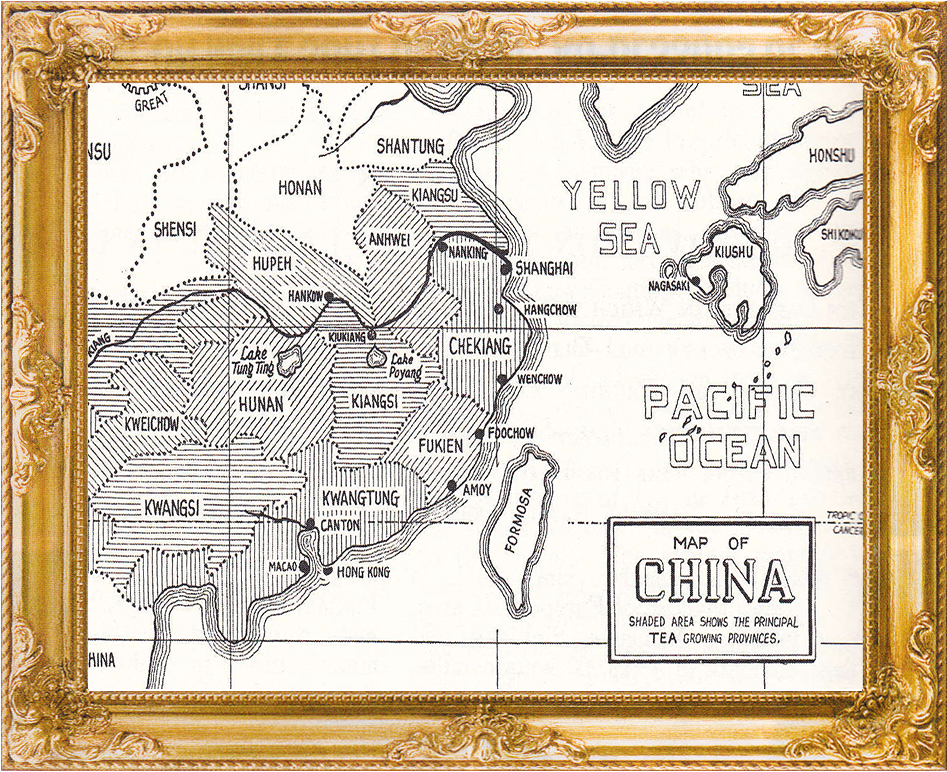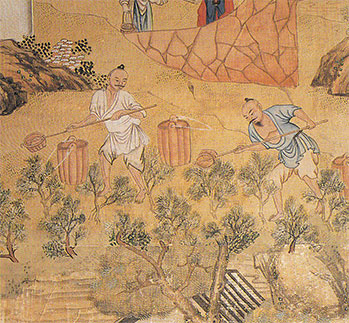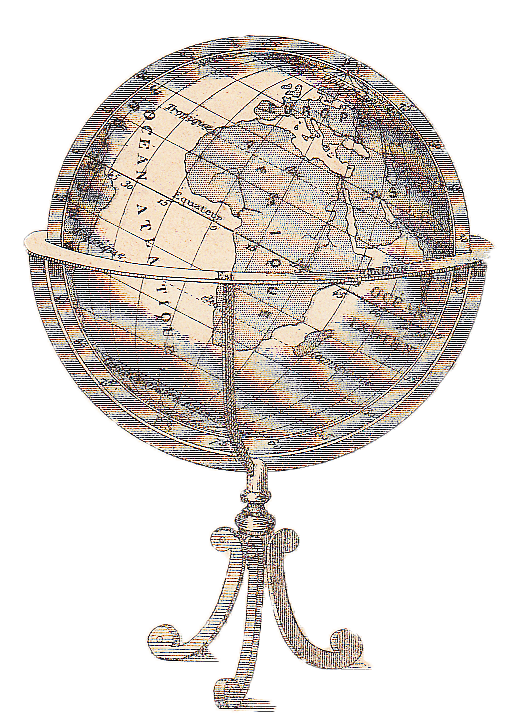Short History of Tea and Britain
 Source: Jane Pettigrew
Source: Jane PettigrewCatherine Braganza, Queen Consort of England 1662-1685
 Source: William Ukers
Source: William UkersTea Growing Regions in China
 Source: mellowmint.deviantart.com
Source: mellowmint.deviantart.comThe British Empire, 17th-19th century
Tea and the Britain have a shady history. The British brought tea to England by way of monopolistic trade, smuggling, drug dealing, and thievery.
The tea plant from China became one of the most important commodities of British trade during the 17th-19th centuries. The need to acquire tea lead to the expansion of the Empire and several wars, and at the height of the British Empire, the English Crown controlled more of the planet than any other country.
China was self-sufficient and had little need for contact with the outside world. For centuries, China grew and manufactured tea in strict secrecy, thousands of miles from western consumers.
After the Portuguese established trade with China in 1537, tea was slowly traded throughout much of Europe. The drink became popular in Holland, especially in aristocratic circles in the capital district of The Hague.
England's King Charles II was exiled to The Hague during the English Interregnum. While there, he consumed tea regularly and met his queen, Catherine of Braganza.
When Charles and Catherine returned to England in 1660 after Commonwealth rule of the Interregnum ended, it was Catherine that made tea popular with the English court by introducing tea to the English nobility and aristocracy.
Catherine preferred tea to alcoholic beverages, claiming alcohol “habitually heated or stupefied their brains morning, noon, and night.” Catherine was, after all, Portuguese, and by this time, Portugal had been trading with China for over 100 years.
Tea quickly became as fashionable with English aristocracy as it had with the Dutch, but that did not mean it tasted good in those very early years. Tea was often stale from months or years of travel, stored poorly, brewed in bulk, and sealed in ale barrels until heated up again and served.
Eventually, Britain learned how to properly package, store, ship, and protect tea, and, just as importantly, Britain learned the proper methods of brewing a pot of tea.
As with most luxurious goods, great value was placed in tea merely because it was difficult to obtain, and for nearly two centuries, tea was prohibitively expensive for most people in England.
 Source: Jane Pettigrew
Source: Jane PettigrewTea originates in China. Ancient writings first referenced tea in 2737 B.C.E.
For thousands of years, China enjoyed tea in peace, keeping their growing and manufacturing methods protected in secrecy.
All tea comes from one plant, the Camellia sinensis.
Tea was grown on many, many tiny farms throughout China, but when combined, it equaled massive amounts of tea each year. This flow of tea was sometimes refered to as liquid jade.
 Source: mellowmint.deviantart.com
Source: mellowmint.deviantart.comIn 1537, the Portuguese were the first Europeans to establish trade with China, in Macau near Canton.
Porcelain was extremely rare in Europe and highly prized. Portugal also traded with China for silk, spices, and for Chinese tea.
The Dutch expanded their trade routes to include China. They brought Chinese goods back to Europe and were the first to introduce tea to England in 1610.
 Source: mellowmint.deviantart.com
Source: mellowmint.deviantart.comDuring the reign of Queen Elizabeth I, the desire for world trade shaped the national purpose of England.
World trade brought new and exotic imports, such as tea, to the people of England. When Britain traded with new countries, a larger world was brought into English homes.
Britain began trading directly with China in 1637, and through the newly chartered British East India Company, imports of Chinese tea came to England.
 Source: William Ukers
Source: William UkersEngland became the second largest comsumer of tea. In the teacup image above, the annual quantities of tea consumption by the British is shown relative to the size of a naval ship. This image could also be seen as a represention of the lengths England would go (military aggression) to protect its access to tea.
By the 19th century, a cup of tea could be seen as the embodiment of the British Empire itself. The porcelain cup was imported through British-controlled Hong Kong and the tea from British-controlled India. Sugar was grown in British West Indies colonies, and milk came from domestic, English dairy farms.


